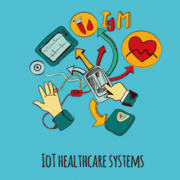The Internet of Things – hospital connectivity?s smart new frontier
The Internet of Things (IoT) has been hailed by some commentators as one of the biggest revolutions in the hospital environment since the inception of patient monitoring equipment thirty years ago.
The latter triggered dramatic improvements in outcomes and explains the panoply of equipment now standard in every hospital room – from pulse oximeters, ECGs and apnea monitors to infusion pumps and ventilators.
False positives and negatives
Few doubt that healthcare today has improved because of such equipment. However, as the devices proliferated, another kind of risk has emerged. These monitoring devices operate independently, with no means to assimilate information from multiple sources and intelligently understand patient status. As a result, some devices can occasionally fail to issue an alarm (a false negative), while others do so wrongly (a false positive). On their part, healthcare staff members – whose numbers have shrunk as many of their tasks began to be handled by the devices – often tend to shut off what they believe are nuisance alarms.
Many are just that – nuisances. Some are not. In both cases of false positives and false negatives, human lives are often put at risk.
Nine of 10 healthcare IT departments ready for IoT
The Internet of Things (IoT) is seen to offer a way out of such challenges. IoT uses sensors, radio-frequency identification (RFID) and Real Time Location System (RTLS) to capture or monitor data and automatically trigger certain events.
In times past, healthcare sensors covered devices such as vital signs monitors. Today, those monitors and much other hospital equipment is connected by the IoT


